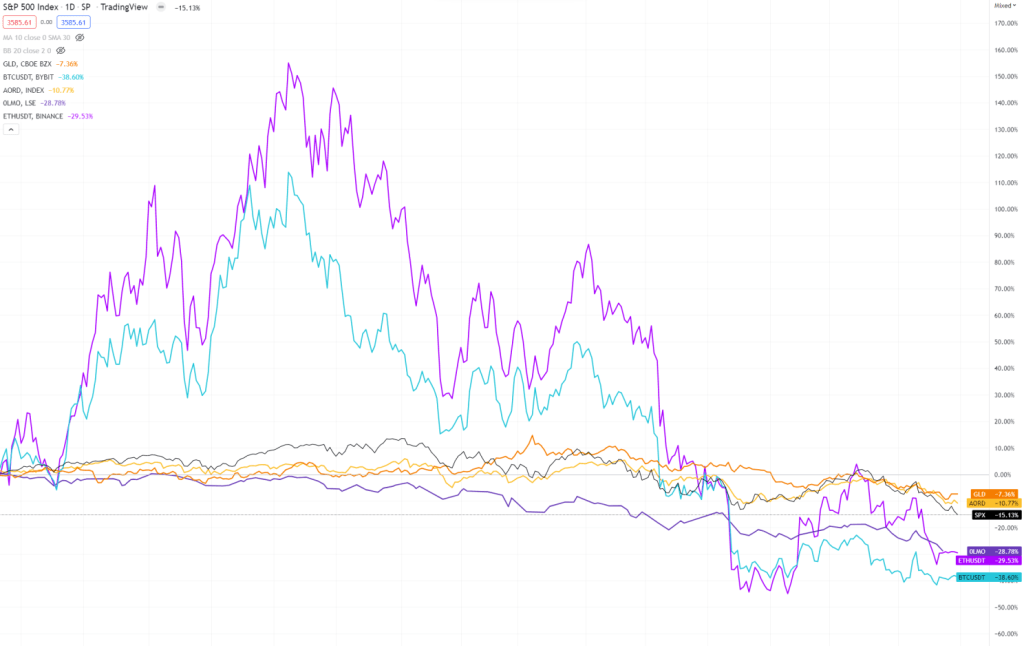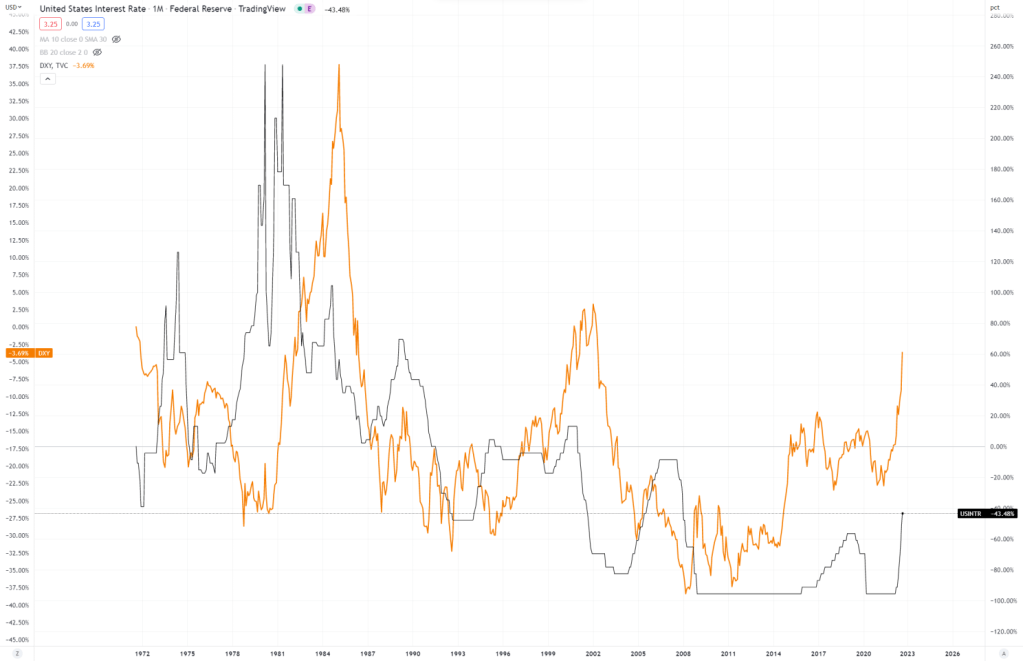Dear friends,
What a month we've seen across global markets for September. In this article, I'll be delving into why Web3 and decentralised money makes increasing sense in a fiat currency world.
As always, I like to zoom out first for a look at the macro landscape.
12 month performance from best to worst is as follows:
- Gold: (-7.4%)
- All Ordinaries (Australia): - (10.8%)
- S&P 500 (U.S): (-15%)
- FTSE (UK): (-28.8%)
- Ethereum (-29.5%)
- Bitcoin (-38.6%)

Markets globally have been selling off in September as stagflation (low growth - high inflation) scenarios look increasingly more likely for the years ahead. The recent move by the Bank of England to cut taxes and increase fiscal spending by £45bn on top of an existing £150bn energy subsidy package was met by international markets with a vote of no confidence. 10 year government bonds also known as 'gilts' were issued to help raise capital to pay for this significant expenditure. Unfortunately for the UK government, much of the world is already in a high inflation environment, buying negative yielding government bonds in exchange for a debasing fiat currency isn't what investors want at the moment.
The ramifications of this fiscal flop meant that the price of gilts plummeted as supply increased but demand didn't. Pension funds, some of the largest holders of these gilts which are used as 'safe' collateral to borrow against, saw their asset values collapse nearly overnight. In an emergency situation, the BoE was forced to step in and buy its own governments' debt in order to stop many of these pension funds become insolvent through margin calls. More currency debasement to fight inflation.
The sobering reality is that no country can print their way out of trouble here. In fact, increasing one's debt (especially debt denominated in a non local currency) in a rising interest rate environment, simply means that you will need to print more of your own money (debasement) to pay off the increasing interest repayments on that international debt.
The U.S has been the world's global reserve currency since the second world war, accounting for ~60% of global trade liabilities. International and emerging markets with dollar denominated debts face this rising interest rate problem and it's a key reason why we've seen such strength in the U.S dollar lately. You can read more about this concept, named "the dollar milkshake theory" here: https://www.techinasia.com/dollar-milkshake-theory-means-crypto
In the chart below you can see the correlation between the U.S fed funds rate (black) and the dollar index or DXY which shows the relative strength of the dollar against international currencies (orange). Quite a strong correlation.

What's next?
So, the question is where is all of this going? In simple terms, we will get what we've always gotten - currency values that are worth less tomorrow than they are today, and increasing prices for scarce and valuable assets (land, real estate, commodities, energy and consumer essentials).
Where does "crypto" fit into all of this? The use cases for Web3 assets are still going to gain traction and adoption over time, but perhaps not as quickly whilst people focus on essentials and managing increasing costs of living. With that said, I think there will be specific examples which will continue to thrive in a tough economic environment. Demand for stablecoins, particularly those of stronger currencies like the U.S dollar will continue to see international demand growth as people look for safety from their faster debasing currencies. Secondly, bitcoin represents an increasingly self-evident sanctuary amongst the fiat currency problem that has plagued society for generations. We have at our hands a technology which facilitates transactions, with a fair and decentralised accounting ledger that any country, friend or foe can rely on for conducting trade.
As always, thank you for reading. If you'd like to have a discussion about the markets and/or find out how you can acquire and store your digital assets securely and at minimal cost then please feel free to reach out directly.
.png)
.png)